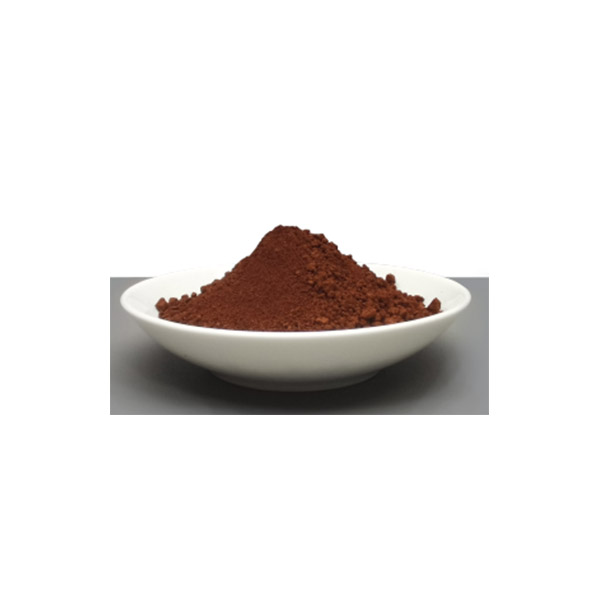Iron pigments are widely used in various industries, including construction, coatings, plastics, and art. Their versatility, durability, and vibrant colors make them a popular choice for many applications. D-Ray Technology's Iiron pigments are high-performance iron-based pigments that are widely used in coatings, plastics, and building materials. These pigments are known for their excellent lightfastness and weather resistance, which can effectively improve the color stability and durability of products. In addition, D-Ray Technology is committed to the research and development of environmentally friendly iron pigments to ensure that its products meet market needs while reducing the impact on the environment. With advanced production processes and strict quality control, D-Ray Technology's iron pigments have become a leading choice in the industry.

Understanding Iron Pigments
Iron pigments are derived from iron oxide and come in various forms, including red, yellow, brown, and black. These pigments are known for their excellent lightfastness, heat stability, and resistance to chemical degradation. They are commonly used in paints, coatings, and plastics due to their ability to provide opacity and color stability.
Types of Iron Pigments
-
Red Iron Oxide: This pigment is known for its bright red color and is often used in construction materials, coatings, and artistic applications. It offers excellent UV stability and is resistant to fading.
-
Yellow Iron Oxide: This pigment provides a warm yellow hue and is commonly used in decorative paints and coatings. It is also known for its good weather resistance.
-
Brown Iron Oxide: This pigment offers a rich, earthy tone and is often used in concrete, masonry, and other construction materials. It provides excellent coverage and durability.
-
Black Iron Oxide: This pigment is used to create deep black shades and is often found in coatings, plastics, and inks. It has excellent lightfastness and heat stability.
Factors to Consider When Choosing Iron Pigments
When selecting the appropriate iron pigment, several factors should be taken into account:
1. Application
The intended application of the pigment is crucial in determining the right type. For example, if you are formulating a paint for outdoor use, you may want to choose a pigment with high UV resistance and durability. Conversely, for artistic applications, you might prioritize color vibrancy and ease of mixing.
2. Color Requirements
Different iron pigments offer varying shades and hues. It is essential to consider the specific color you need for your project. You may want to create a custom color by blending different pigments, so understanding the color wheel and pigment mixing is beneficial.
3. Regulatory Compliance
Depending on your industry and location, there may be regulations governing the use of certain pigments. Ensure that the iron pigment you choose complies with local and international safety and environmental standards.
4. Compatibility
Compatibility with other materials in your formulation is vital. Some iron pigments may react with other components, affecting the overall performance and appearance of the final product. Conduct compatibility tests to ensure that the pigment works well with your chosen binders, solvents, and additives.
5. Cost and Availability
Consider the cost and availability of the iron pigments you are interested in. While high-quality pigments may come at a premium, they often provide better performance and longevity. Evaluate your budget and sourcing options to find a suitable balance.
Recommendations for Specific Applications
1. Coatings and Paints
For exterior coatings and paints, red and yellow iron oxides are excellent choices due to their UV stability and weather resistance. Brown iron oxide can be used for earthy tones, while black iron oxide is ideal for achieving deep, rich colors.
2. Plastics
When formulating plastics, consider using black iron oxide for its excellent heat stability and lightfastness. Yellow and red iron oxides can also be used to achieve vibrant colors, but ensure compatibility with the plastic matrix.
3. Construction Materials
For construction applications, brown iron oxide is often preferred due to its natural appearance and durability. Red and yellow iron oxides can also be used to enhance the aesthetic appeal of concrete and masonry products.
4. Artistic Applications
Artists often prefer red and yellow iron oxides for their vibrant colors and ease of mixing. Brown iron oxide can be used for creating natural earth tones, while black iron oxide is perfect for deep shadows and contrasts.
Conclusion
Choosing the appropriate iron pigment requires careful consideration of various factors, including application, color requirements, regulatory compliance, compatibility, and cost. By understanding the different types of iron pigments and their properties, you can make informed decisions that will enhance the quality and performance of your products. Whether you are working in coatings, plastics, construction, or art, selecting the right iron pigment will ensure that your project meets both aesthetic and functional requirements.
www.draycolor.com
Zhejiang D-Ray Technology Co., Ltd
